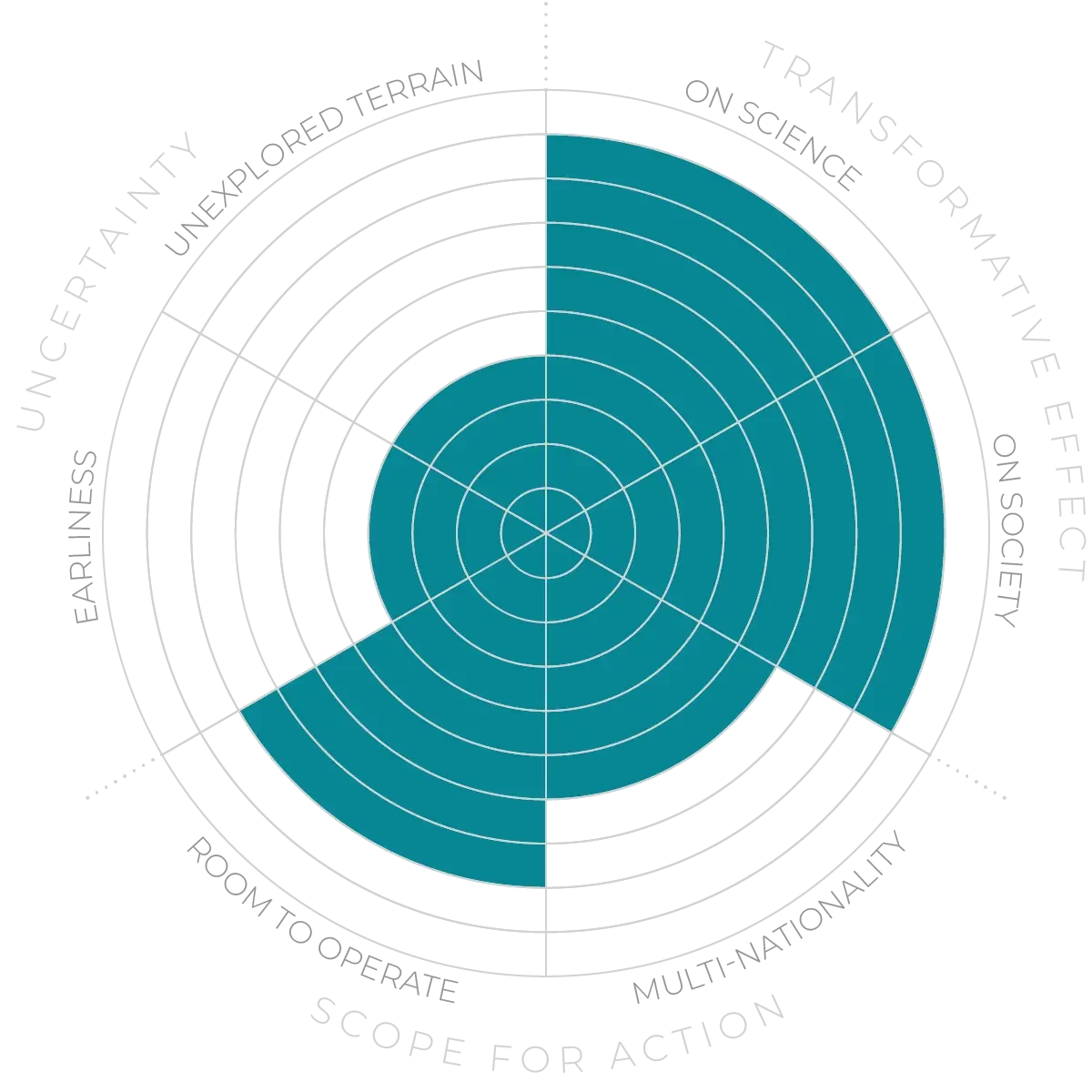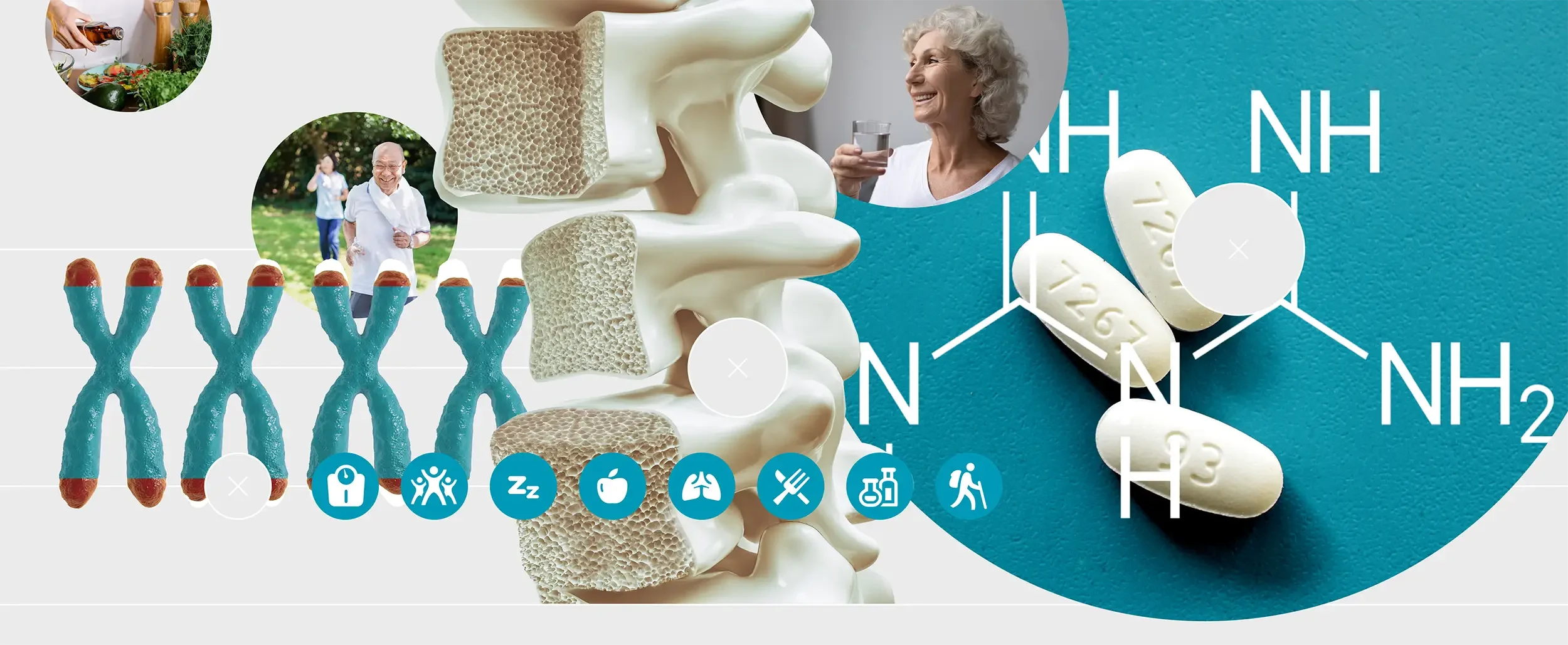Future Horizons:
10-yearhorizon
AI assists dark-genome research
AI identifies many of the functions of non-coding elements and their effects on healthspan. It becomes possible to biochemically separate adaptive from maladaptive changes induced by jumping genes. First drugs developed to target specific transposable elements. Dark genome yields anti-cancer drugs.
25-yearhorizon
Research identifies harmful elements of dark genome
Identification of specific, harmful elements that carry no hidden benefits to an organism leads to improved therapies with reduced side effects. We untangle the other ways activation of the dark genome affects multiple, often unrelated, traits that affect apparently unrelated tissues and cell types.
Of particular interest for geroscience are transposons: repeating, self-replicating DNA sequences that can alter their location in the genome.10 Also known as “jumping genes”, they make up about half of the genome. Their activity — which increases with an organism’s age — can alter chromosome structure, destabilise the genome, trigger immune response and inflammation,11 and create other conditions that have been tied to poor health outcomes in old age.12 Turning them off seems to have broad health benefits, as revealed in HIV antiretroviral therapies that turn off the “LINE” transposons (among the most prevalent repeating sequences, and major contributors to human genetic variation).13 This reverses the age-accelerating effects of HIV with no health trade-offs.14 Doing so holds promise for other diseases associated with LINE-1, such as rheumatoid arthritis15 and lupus.16
However, manipulating the dark genome will be more complex than simply finding a general-purpose “off” switch. Preclinical trials are beginning to show that, under certain conditions, some parts of the dark genome might have beneficial effects. Also, a better understanding of how non-coding elements interact with coding elements may yield a rich new source of new biomarkers and potentially even therapies. Our understanding of the dark genome has been hampered by technological limitations of DNA and RNA sequencing requiring fragmentation followed by aligning to reference sequences to forecast the underlying sequence. New technologies, including nanopore, which allows direct reading of long sequences of DNA and RNA, are advancing our understanding of the dark genome,17 but more research into these intricate relationships and how to balance the trade-offs is needed. Excitingly, the dark genome appears to be responsive to rejuvenation, so a better understanding of rejuvenation may also shed light on it.
Dark genome - Anticipation Scores
The Anticipation Potential of a research field is determined by the capacity for impactful action in the present, considering possible future transformative breakthroughs in a field over a 25-year outlook. A field with a high Anticipation Potential, therefore, combines the potential range of future transformative possibilities engendered by a research area with a wide field of opportunities for action in the present. We asked researchers in the field to anticipate:
- The uncertainty related to future science breakthroughs in the field
- The transformative effect anticipated breakthroughs may have on research and society
- The scope for action in the present in relation to anticipated breakthroughs.
This chart represents a summary of their responses to each of these elements, which when combined, provide the Anticipation Potential for the topic. See methodology for more information.



